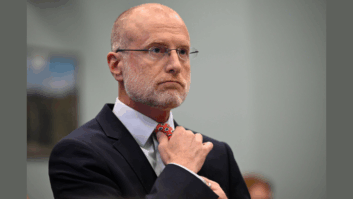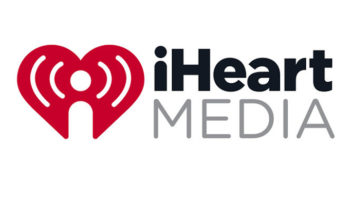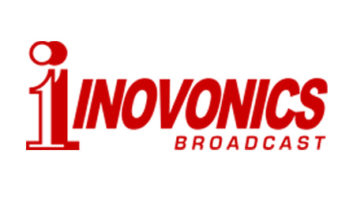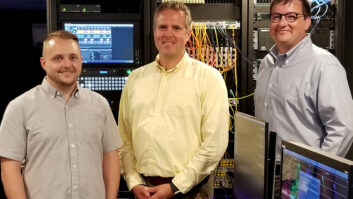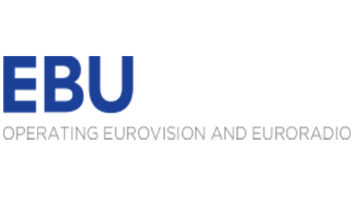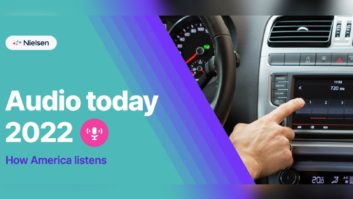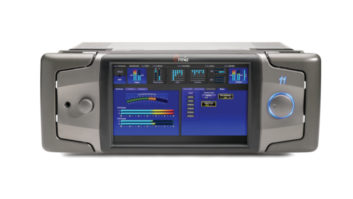A friend of this column, a former radio chief who sells equipment for a living, has a concern.
“I have just come back from a state broadcast show and, as with many other shows, spent much of the time talking to other vendors. Over time, I have developed the impression that there is way too much ‘vendor bonding’ time.
“We don’t expect people to skip sessions to talk with us, but even when there are breaks, there is often a dearth of attendees at the booths. It was apparent at a show like this, where there are only a handful of vendors present.”
To make small shows work for everyone, he feels, attendees have a responsibility to talk to the vendors.
“Even if they don’t have a project that involves that specific product, attendees could tell the vendor that and just ask for a brief overview of their new gear. This would make the vendors feel like there was a reason to be there. One of my colleagues describes it as ‘meaningful conversations with significant people.'”
Vendors who attend small shows don’t come expecting to close orders, he continues. “But we do expect that someone will visit the booth for a talk. Often what happens is the attendee will stop by a dealer that he buys from and never stops to talk to others — the ‘my friend’ scenario.”
It costs an average of $3,000 for his company to participate in these shows. That’s a lot for many vendors, especially multiplied out over many conferences.
“These shows should be more and more important as many stations can’t afford to send engineers to the NAB,” he said. “The state shows are good places to see and hear about new technology. But they won’t be if the vendors stop showing up. I can’t justify the cost of appearing at a show where one person stops by my booth to talk; nor can many of us in this economic climate. I can present at an SBE meeting and sponsor the refreshments for the meeting, and I have the full attention of a group of responsive engineers; I don’t have to spend sometimes as much as $950 a table for booth space.”
This isn’t just a vendor griping because no one wants to buy his products. I know the man, and he is concerned about the vitality of the marketplace. He doesn’t want to see fewer and fewer vendors at regional shows.
“The attendees at these shows need to remember to stop by the booths to talk, even when they don’t have an immediate need. They might find out about something they can use in the future, or even for that emergency when they won’t have the time to shop around. They are the reason the vendors show up. If they don’t make the vendors aware that they know that, we will stop going.”
He raises a thought-provoking point. Now, having been involved in small conventions and conferences myself — as an exhibitor, speaker, journalist and adviser, over the years — I know how well intentioned planners are and how they try to balance the needs of exhibitor, attendee, presenter and board member. Even such details as when to schedule an event vs. another and when to leave time for attendees to mingle are critical to success.
I also know that the role of traditional conventions is under siege. Travel budgets are cut; the time to attend them is limited; information is readily available at your desk via Webinars, virtual conferences and other media.
Having said that, I agree that if an attendee is going to take advantage of a show’s offerings, he or she should make time to visit booths and talk to those exhibitors whose fees helped make the event possible.
* * *
In his column in this issue, Skip Pizzi mentions the site StreamingRadioGuide favorably.
The scope of this directory is full-power, FCC-licensed stations — no satellite, no “Internet only” or LPFM stations, no desire to become a global directory of all stations in the world. The number of radio stations confirmed as streaming content has gone from several hundred to more than 6,500.
I wrote to founder Fred Stiening to learn more about his online resource.
“I’m the only person directly involved with StreamingRadioGuide,” he replied. “It’s not a business venture, which is why you see no ads. There is no revenue stream, no employees. Volunteers are encouraged to help with testing listings and identifying streaming problems and programming changes, but the content is all my work.”
Stiening describes himself as a lifelong listener to talk radio, “going back to the days of Ed and Wendy King on KDKA(AM), Larry King, Bruce Williams, Sally Jesse Raphael and the early days of talk radio syndication.” He’s never worked in radio and has no financial interests in the business.
“Starting in the late 1990s, I added radio station information in the dialup internet access directory called FindAnISP.com to provide local content in each city (FindAnISP is still online, but minimally maintained). When the first terrestrial stations began experimenting with streaming, I added ‘Listen’ links for radio stations I found, to make people aware it is something they could do with their new Internet access. Streaming radio over the Internet made sense to me as something people would use regularly after they tried it.
“When dialup Internet access started its inevitable decline around 2003, I adapted the research tools, server hardware and revenues from FindAnISP to spin off StreamingRadioGuide on its own and it became my full-time ‘job’ to locate and add Web site and streaming information for all terrestrial radio stations that I could find.”
The site lists programs and frequently a current day’s topic. His goal though isn’t to list every program on every station. Listings appear in popularity order, with the programs and stations that most people have listened to first. Stations that preempt programs with sports, lower-quality streams and those that force pre-stream advertisements or popup ads sort to the end. Shows for which there is no interest after several months expire and no longer appear.
On a typical weekday, Stiening sees 8,000 to 10,000 visitors. Since he started keeping detailed records three years ago, some 4.8 million attempts have been made to visit the streams of the stations listed. The two biggest days were the day after Election Day 2008 and Jan. 20 of this year, inauguration day. The metrics of which shows and stations are getting the most traffic are available without registration under the Streaming Popularity link.
StreamingRadioGuide, he says, is a place listeners go to find something they already know about. It isn’t a place for a local radio personality to generate interest in their show or catch the eye of a syndicator.
Why does Stiening, who essentially is retired, do it? “It’s a lot more interesting than going to a senior center and playing Bingo.”
The author is Editor in Chief of Radio World U.S.
